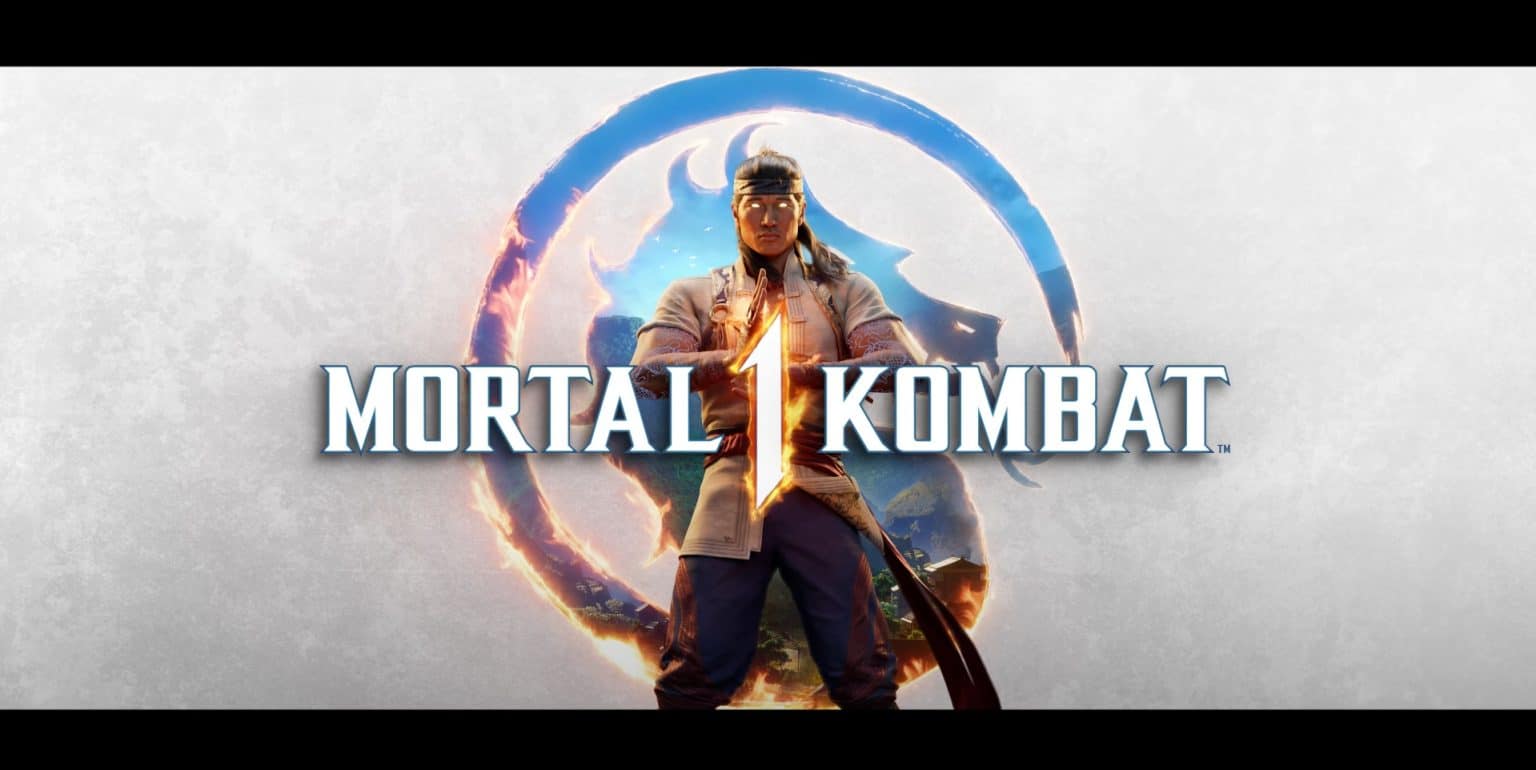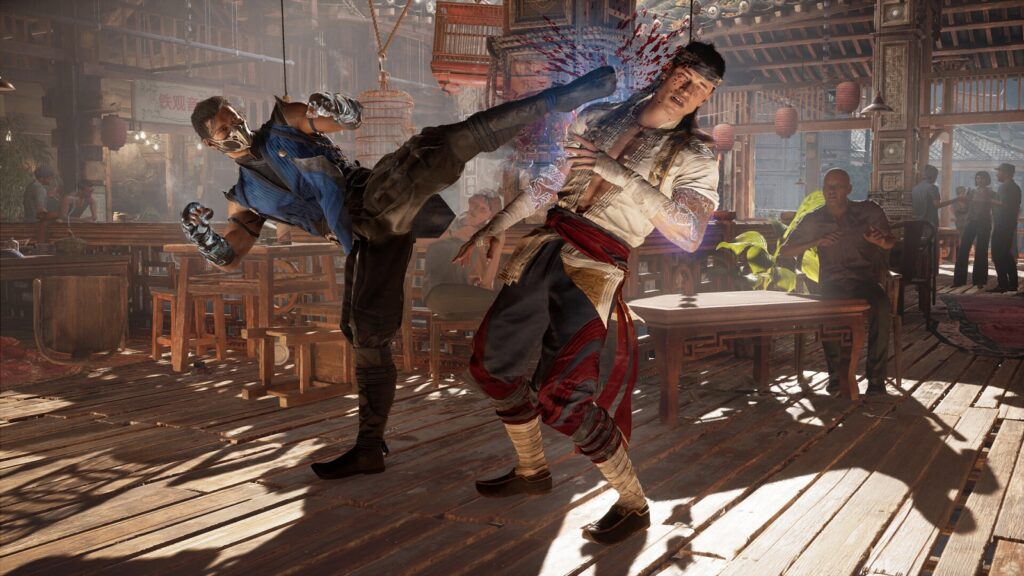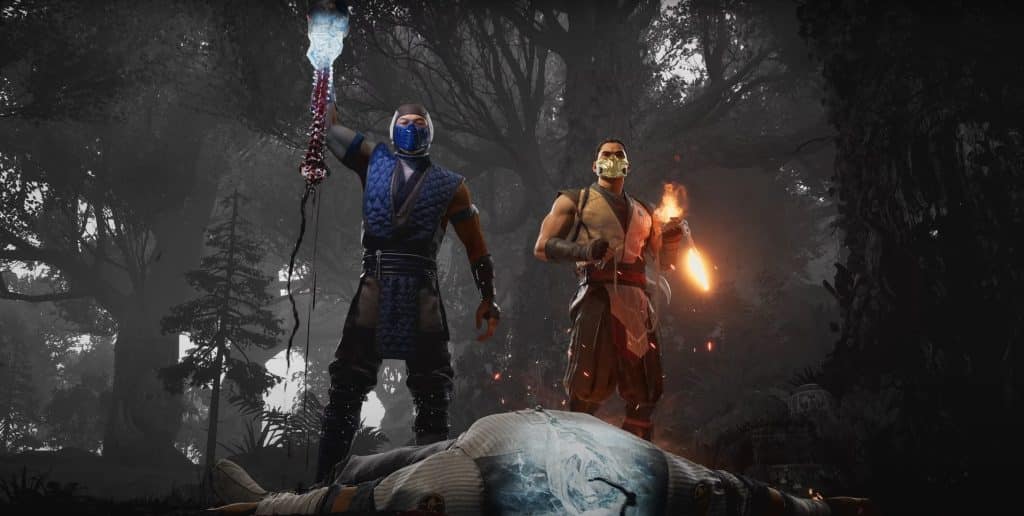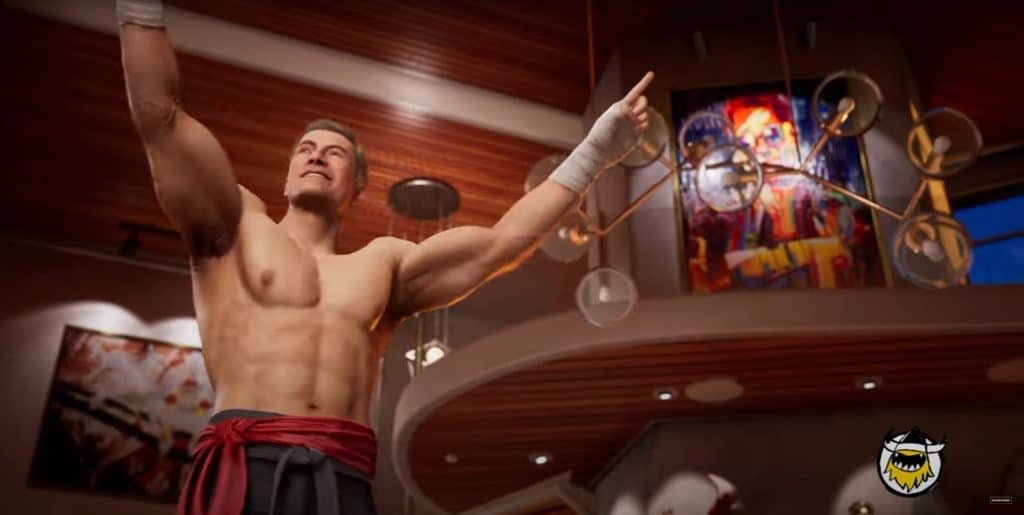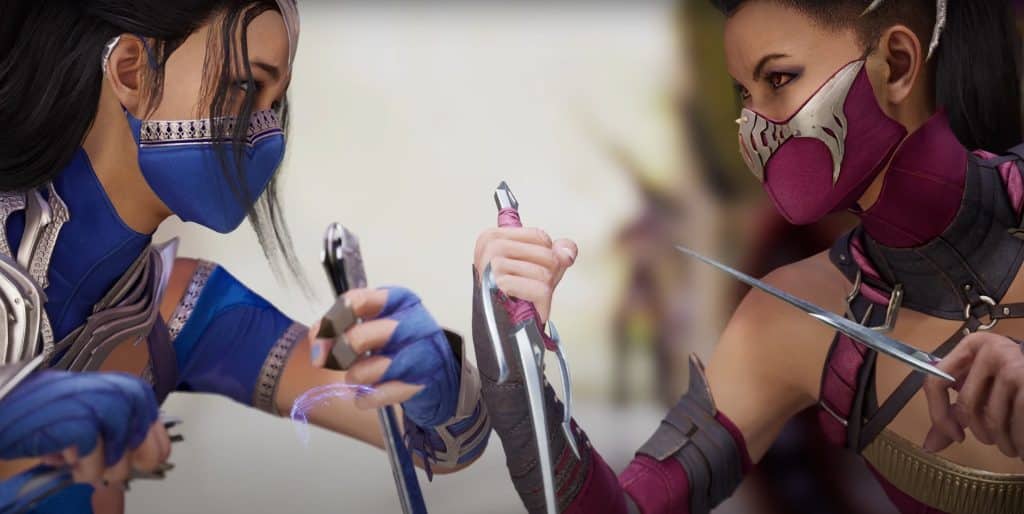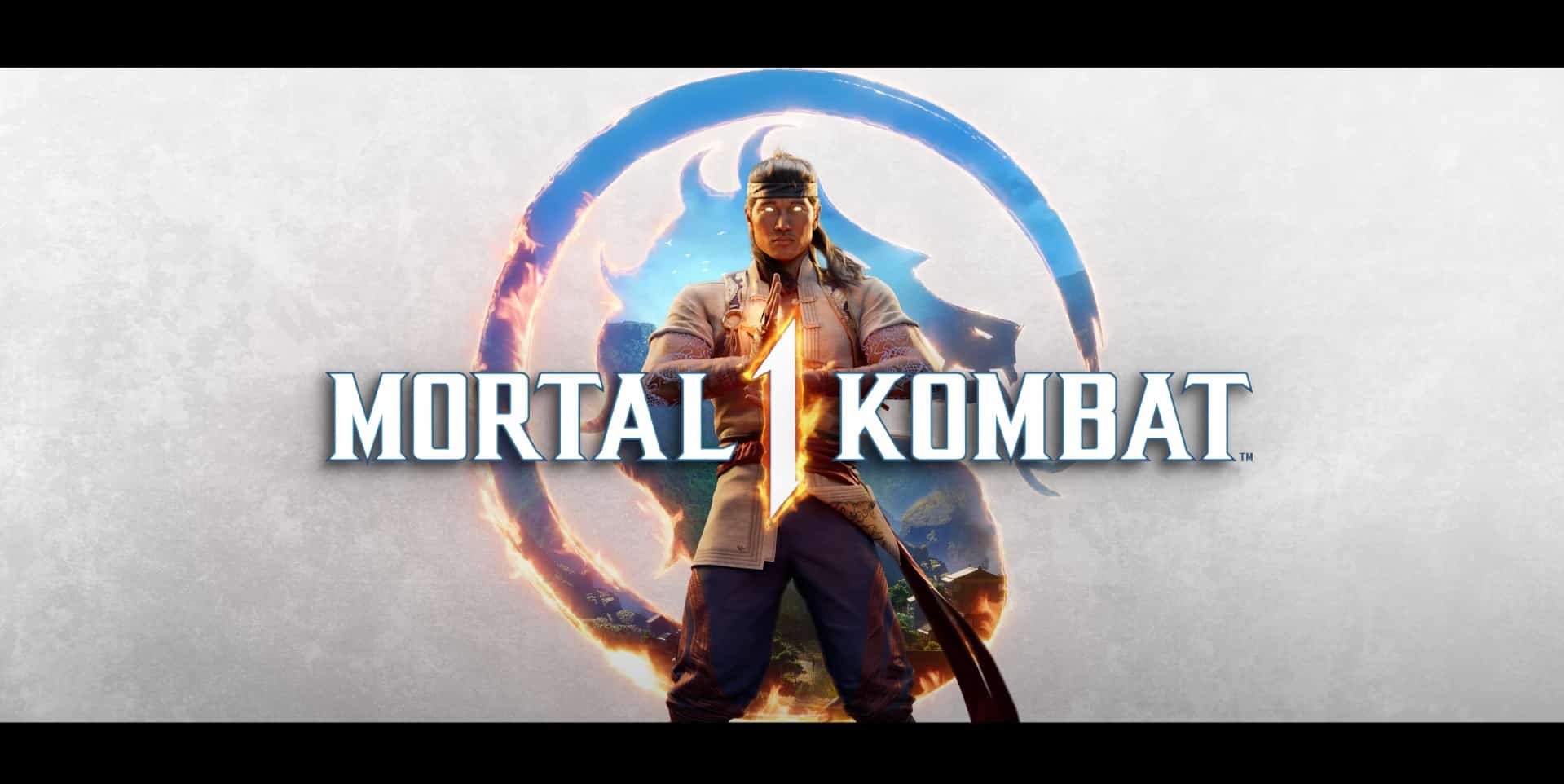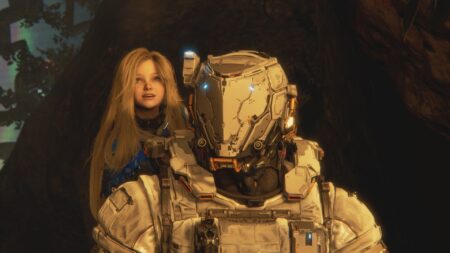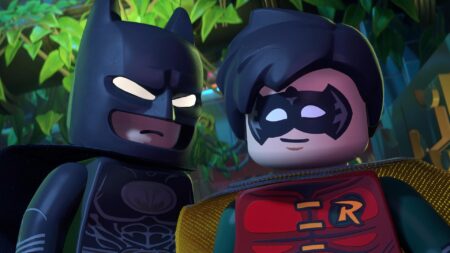Mortal Kombat 1 is the latest game in the long-running Mortal Kombat series developed by Netherrealm Studios and published by Warner Bros. It is the 12th installment in the mainline series. It is a direct sequel to Mortal Kombat 11 and a soft reboot of the franchise.
Following the “Aftermath” DLC events in Mortal Kombat 11, Liu Kang uses Kronika’s Hourglass to create a new timeline and attempt to create a more peaceful universe for all the realms. He manipulates time and ensures that the past events that led to chaos and conflict are altered. Liu Kang then attempts to use the Hourglass to prevent the long-standing conflicts among the realms from ever happening, but doing so creates new unforeseen consequences.
After Lui Kang created a new timeline and reshaped the history of Mortal Kombat, the fire God uses Kronika’s Hourglass to recreate a new universe. However, during this new timeline, Lui Kang also altered some of the characters’ destinies, especially villains like Quan Chi and Shang Tsung. To make sure that they will not threaten the new timeline. But a mysterious figure helps them escape their miserable lives and pushes them to become the villains they were always been. This threatens Lui Kang’s new timeline, and he must do everything to stop this new threat and prevent past events from happening again.
Moral Kombat 1’s gameplay is similar to the previous installment but with new combat mechanics contributing to the evolving gameplay experience. Players can string together a series of attacks and special moves to create combos. Combos vary from character to character and can deal significant damage when executed correctly. Each character has a unique set of special moves, such as fireballs, uppercuts, and teleportation attacks. These moves use specific button combinations and are essential for offense and defense.
Fatal Blow returns! The feature was introduced in the previous entry, Mortal Kombat 11. They can only be executed when a character’s health drops to 30% or lower. It’s a cinematic attack, meaning that they trigger a special animation sequence that showcases the devastating move. This adds to the dramatic flair of Mortal Kombat combat. If a player misses a Fatal Blow or has it blocked by their opponent, they suffer a cooldown period of 10 seconds before they can attempt to use it again. This prevents spamming of the move. Furthermore, players can only use a Fatal Blow once per match. This limitation ensures that the move retains its impact and significance.
The Kameo System is a new mechanic where you can choose a second character to assist you, block, grab, attack, and extend your combos, adding depth and variety to gameplay. Each Kameo character is unique, providing different play styles and combo possibilities, making it enjoyable to experiment with various combinations.
One notable concern is the restriction of movement when using a Kameo character, which differs from MK11 and Injustice 2, where players have more control over their main character. Sometimes, they become unresponsive and completely ignore my input. This aspect might need improvement.
I also want to praise how good and easy to navigate Mortal Kombat 1’s menu design. It’s not messy and over the top like in the previous game. The simplistic design makes choosing between story, invasion, or online play easy.
The menu is separated by modes of play like:
Story Mode: A full cinematic campaign where players follow a scripted narrative with characters, dialogue, and plot developments, often accompanied by cut scenes or in-game events.
Invasion: A new feature to the series that replaces the “Krypt” from previous games. Invasion mode is a mini-game where you go to different worlds, and it’s like a board game where you move one square at a time, and every space you land on teleports you to a fight. Enemies or stages will get buffs like the stage will have random rockets hitting you, enemies will have armors, or you will face three different enemies per round and other challenges. You get season rewards like costumes, currency, talismans, fatalities, etc.
Towers: The Klassic Towers return where players choose a specific character and compete against AI-controlled opponents. Each character typically has a unique tower with a short story or narrative elements related to that character’s journey or objectives.
Rewards: The tab where you can spend your earned currency for in-game rewards like cosmetics, gear brutalities, and fatalities. It replaces the convoluted “Krypt” system. It uses a less complicated system where you can redeem your well-earned credits from the main menu by melting coins in the “Shrine” menu to get your rewards instantly.
Local and Online Play: Players can engage in both local (offline) and online play, providing various ways to enjoy the game and compete against others.
Mortal Kombat 1’s visuals are amazing and better than Mortal Kombat 11. The game has beautiful particle effects, fire rendering, and background effects. The particle density is higher than in the previous game. The lighting effects of Raiden’s attack, the fire effects of Scorpion’s flame attacks, and Sub-Zero’s ice attack look far better than those used in Mk11. The gore effects have been scaled up, and the X-ray attacks from the Krushing blows look far better too.
The visual effects and overall presentation of Mortal Kombat 1 are a significant improvement over its predecessors. Game developers often strive to enhance the graphical fidelity and visual impact with each new installment in a series, taking advantage of technological advances to deliver a more immersive and visually stunning experience. The stage design and environmental details also play a crucial role in creating an engaging and immersive gaming environment.
The concept of resetting the timeline can offer developers an opportunity to reimagine and refresh the game’s stages, characters, and narrative, providing a fresh experience for longtime fans and new players. The visual aspects of Mortal Kombat 1 highlight the importance of graphics and presentation in modern gaming, as they can significantly contribute to the overall enjoyment of a game. Mortal Kombat 1 has made significant strides in this regard to create a visually captivating and immersive experience for players.
This game runs smoothly on a PS5, and I didn’t encounter an issue during my whole playthrough of this game. I did experience some bugs in Story Mode, like Kung Lao’s hat floating around the stage or Sindel’s hair covering her face. As performances go, the PS5 has no issue running the title.
The minor bugs and glitches I mentioned in the story mode are relatively common in video games, and as I said, they often get addressed and fixed in future patches or updates. Game developers actively work to improve and optimize their games, and player feedback is crucial in helping them identify and resolve issues. It’s also worth noting that story mode glitches, like floating objects or character model quirks, typically don’t impact gameplay significantly and can sometimes even add humor to the experience.
Mortal Kombat 1 is a welcome addition to the franchise. The gameplay is enjoyable, and the Kameo system is one of the best mechanics they added to the game. The Invasion modes, where I face a series of challenges and earn rewards for my efforts, can add a layer of engagement and long-term motivation to a game. If you are a Klassic Mortal Kombat fan or a new to the series, I highly recommend this game. I did have some issues with the story’s third act. It was so out of place for me, and the story would be better if they went in another direction. But all in all, the gameplay, the new modes, the online play, and the performance are excellent.



